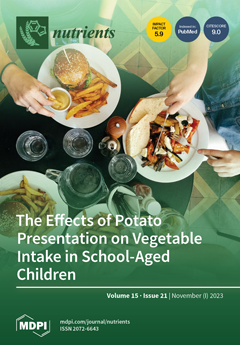Low-grade chronic inflammation linked to obesity can lead to alterations in biomarkers of iron status. The aim of this study was to investigate the primary determinant of serum iron levels among anthropometric measurements, body fat, and serum biomarkers of low-grade chronic inflammation in a group of adult individuals with severe obesity. We enrolled 114 individuals (84 females; 30 males) aged 40.96 ± 12.54 years. Weight and body mass index (BMI) were 121.20 ± 22.33 kg and 44.94 ± 7.29 kg/m
2, respectively. Some 30% of individuals had class-II obesity (BMI ≥ 35 ≤ 39.9 kg/m
2) and 70% had class-III obesity (BMI ≥ 40 kg/m
2). A weak, albeit significant, inverse correlation was found between serum iron levels and c-reactive protein (CRP) (r = −0.259,
p = 0.008), fibrinogen (r = −0.261,
p = 0.006), BMI (r = −0.186,
p = 0.04), waist circumference (WC) (r = −0.265,
p = 0.004), and fat mass % (r = −0.285,
p = 0.003). With multiple linear regression analysis including CRP, fibrinogen, BMI, WC, and fat mass % as independent variables and serum iron levels as dependent variable, WC was entered in the first step (
p = 0.001), which was followed by fat mass % (
p = 0.047) and CRP (
p = 0.047). Grouping the individuals according to the interquartile range of BMI, WC, and fat mass % (Q1–Q4), the lowest serum iron levels were found in Q4 groups of WC and fat mass % (
p = 0.02), while no significant differences were found between groups in BMI quartiles. In conclusion, in our study, population serum iron levels were inversely associated with BMI, visceral obesity, fat mass %, CRP, and fibrinogen, but WC was the major negative predictor of serum iron level. These results supported the fact that visceral distribution of body fat, more than obesity per se, was associated with low serum iron levels in adult individuals with severe obesity.
Full article






